Ikagin House
Captain McKenna of the Pacific Steam Whaling Co. built this cabin for his own use in 1893. It was constructed utilizing materials left over from the construction of Building No.4. The building underwent a number of changes over the years including the shingling of the exterior and the refinishing of the interior several times. Work undertaken to conserve this building includes: re-roofing, re-shingling of the exterior walls, and replacement of the window sash. Other than repairs to the flooring no work was undertaken on the interior of the building. It is currently used to store personal equipment and gear for the Park staff. This building is now known by its Inuvialuit name Ikagin House.
Region:
Yukon
Field Documentation:
June 14, 2018
Field Documentation Type:
Terrestrial LiDAR
Historic Period:
1893CE
Latitude:
69.569556
Longitude:
-138.913547
Threat Level

History
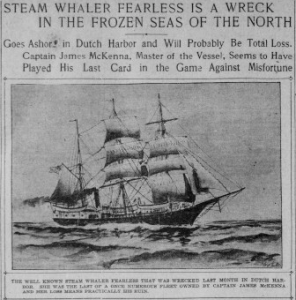
James McKenna was born in Liverpool, England in 1846 and at the age of twelve left home to become a cabin boy and follow the sea [1]. Eventually, McKenna ended up in San Francisco which was a busy and important whaling port in the last half of the 1800s [1]. McKenna owned and captained many ships, becoming an infamous name in whaling especially for his ship Fearless [2]. Fearless was a whaling steam bark purchased in Norway and brought to its new San Francisco owner in 1893 [2]. The same year, McKenna Captained the ship to Herschel Island in pursuit of the Arctic bowhead whales [2]. McKenna and the crew stayed on Herschel Island until 1897 [2]. In 1901, the Fearless was lost returning from her third Arctic voyage in Dutch Harbour, Alaska [2]. While on Herschel Island it is likely that Captain McKenna built this house for his own uses in 1893, although the exact reasons and time of construction are not known [3,4]. It is also not known how long the building remained in use for or who it was used by after McKenna’s crew left the island [4]. This building does feature the earliest instance of graffiti on Herschel Island [4]. Dating to 1894 the words “R.E. Byrne May 7/94 Str Grampus” were craved into an exposed board, the Grampus was the name of another Pacific Steam Whaling Co steam bark [5].
Construction
The cabin was built out of materials leftover from the construction of The Pacific Steam Whaling Co. community house [4]. It is a small building, approximately 3.8 m by 5.7 m, built on beams resting directly on the ground [4]. The walls are sheathed on the exterior and were originally clad in Redwood siding leftover from the construction of the community house, later recovered in shingles. The interior walls are also sheathed and were originally clad in variety of materials in attempts to make the building more comfortable [4]. The cabin features a gable roof, framed with a simple rafter system and sheathed and shingled. The single door is located in the north wall, and there is one window in each the north and west walls [4]. The building has undergone serval alterations, including the shingling of the exterior and the refinishing of the interior walls [3]. For the purposes of conservation, the cabin has been re-roofed, the exterior walls have been re-shingled, and the window sash had been replaced [3]. The only work done in the interior of the building has been repairs to the flooring [3].
Current Condition
This building is currently used to store personal equipment and gear for Park Rangers [3].
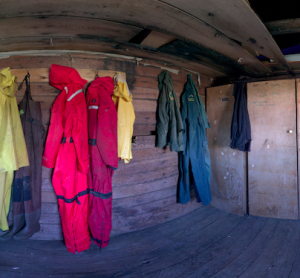
Lifting the Building
Stephan Biedermann is a Historic Sites Conservation Carpenter with Department of Tourism and Culture, Yukon Government. This past summer, Stephan and his colleagues Gisli Balzer and Brent Riley successfully lifted the McKenna House to protect it from flooding. Here is Stephan’s first hand account of lifting the Community House, which is similar to the approach used to lift the McKenna Cabin!
“When the whaler’s buildings were originally constructed on Qikiqtaruk, they were set directly onto the gravel bed that covered Simpson Point in those days, not only because it was easier and required less materials, but also to keep the howling winter storms from blowing through the floorboards. With changing times and tides, now that the buildings are rarely occupied during the winter, and with global warming knocking on the solid doors and ever-increasing tidal events licking on the floor timbers, the buildings are permanently wet, and the moisture is threatening the health of the structures. So, for many years now, the Historic Sites unit of the Government of Yukon has been steadily working away on lifting the structures out of the ground to give them a chance to breath and dry out. After the successful lift of a number of them, this year the attention turned to the Community House, the heaviest and potentially most challenging of them all. Despite it being the oldest framed building in the Yukon, little was known about its actual weight and structural integrity, due to a plethora of different wall compositions, unknown moisture saturation of the wood members and a floor structure that had been hidden away from the sun and human eyesight for over a hundred years. With the help of 16 airbags, with a lifting capacity of 11.7 metric tonnes each and six toe jacks with a capacity of 6 tonnes each, the building was raised by approximately 18” and set on 6”x6”x24” cribbing and pads. This occurred between August 13, 2023 and August 18, 2023.” – Stephan Biedermann, Yukon Government.
CLICK HERE to view a time lapse video showing how the McKenna House was raised
Notes
[1]. Genealogy.com. 2020. Information about James McKenna. Electronic document, https://www.genealogy.com/ftm/m/o/l/Clarence-C-Molinari-CA/WEBSITE-0001/UHP-0690.html, accessed March 15, 2020. [2] Johansseon, Sven, and John MacFarlane. 1990. Captain Christian Theodore Pedersen and the Western Arctic Fur Trade. Electronic document, http://www.nauticapedia.ca/Articles/Arctic_CTPedersen1.php, accessed on March 15, 2020. [3] Yukon Environment. 2006. Herschel Island Qikiqtaruk Territorial Park Management Plan. Prepared with the Inuvialuit Game Council, the Aklavik Hunters and Trappers Committee along with the Wildlife Management Advisory Council (North Slope) for the Yukon Government. [4] Preservation Plan. 1990. Herschel Island Historic Resources Preservation Plan. Final report, December, prepared by Heritage Branch, Department of Tourism, Yukon. [5] Burn, Christopher R. (editor). 2012. Herschel Island Qikiqtaruk: a Natural and Cultural History of Yukon’s Arctic Island. Library and Archives Canada Cataloguing in Publication, Calgary.
This gallery contains images of Ikagin House as it appeared in 2018. Also included is a news clipping mentioning Captain McKenna which documents the perils of Arctic whaling during the late 19th and early 20th centuries.

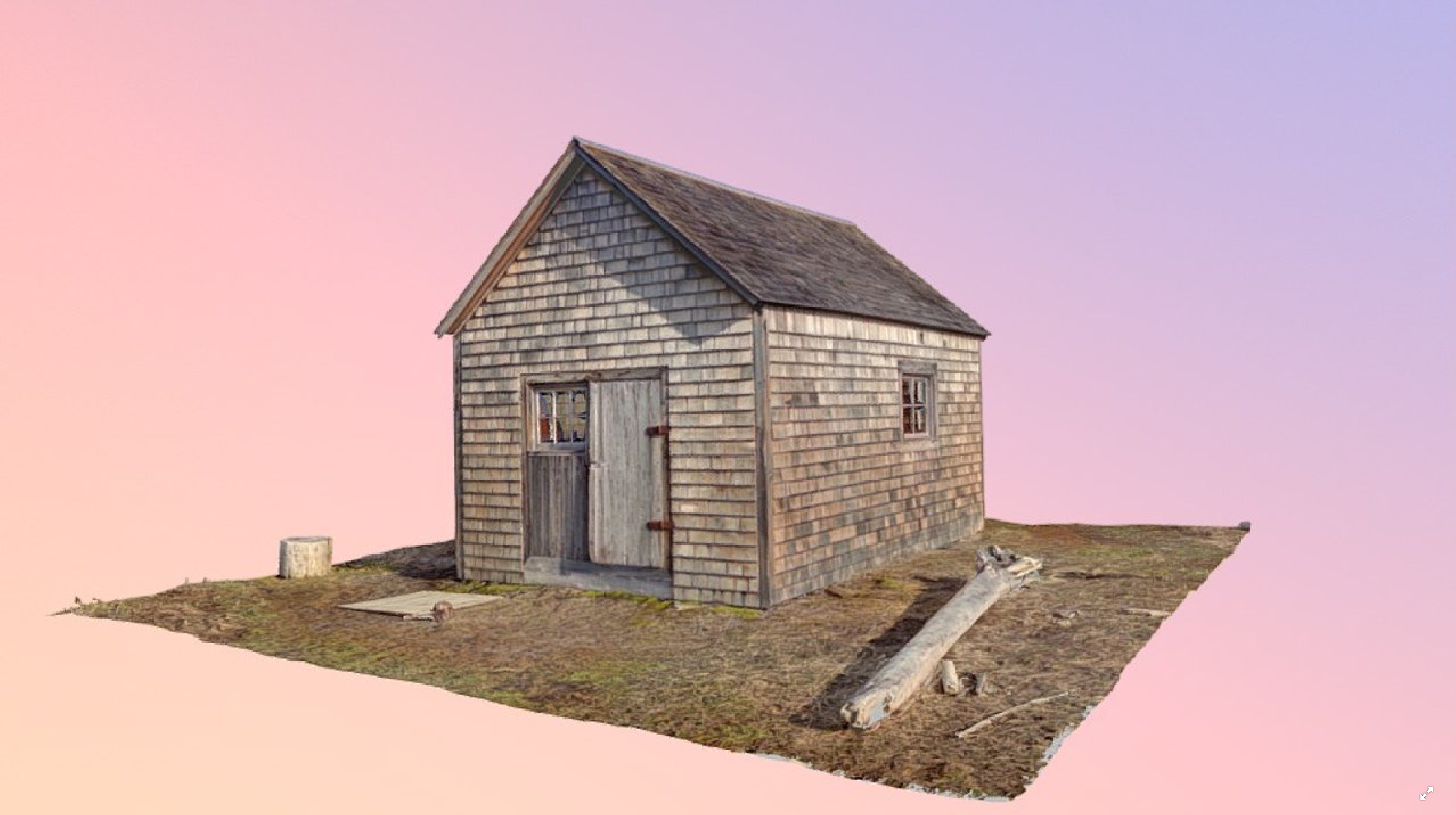

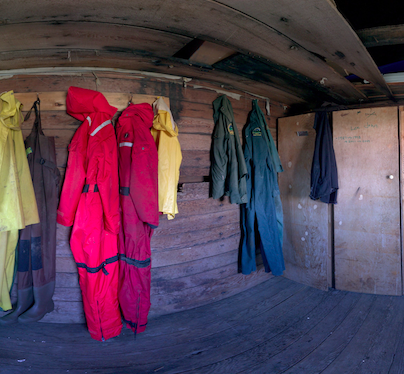
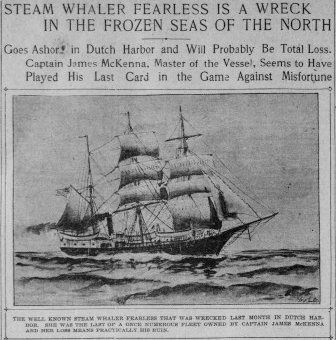
Open Access Data
The raw data files for this project are available for download from the archive repository. Scans are .las file format. Please download the metadata template to access metadata associated with each file. All data is published under the Attribution-Non-Commercial Creatives Common License CC BY-NC 4.0 and we would ask that you acknowledge this repository in any research that results from the use of these data sets. The data can be viewed and manipulated in CloudCompare an opensource software.
Click on the 3D model of Pauline Cove. Marker (9) shows the location of Captain McKenna’s House.
The architectural drawings below were created by Elizabeth Cook, a student in the School of Architecture, Planning and Landscape (SAPL) at the University of Calgary. The drawings were created in Autodesk Revit BIM software using the point clouds captured by the Z+F 5010X and Leica BLK360 scanners. Building Information Modeling (BIM) involves the generation and management of digital representations of the physical and functional characteristics of spaces. We are currently exploring how BIM can be linked with heritage strategies currently used to manage the historic buildings at Pauline Cove – especially in light of current climate change impacts.
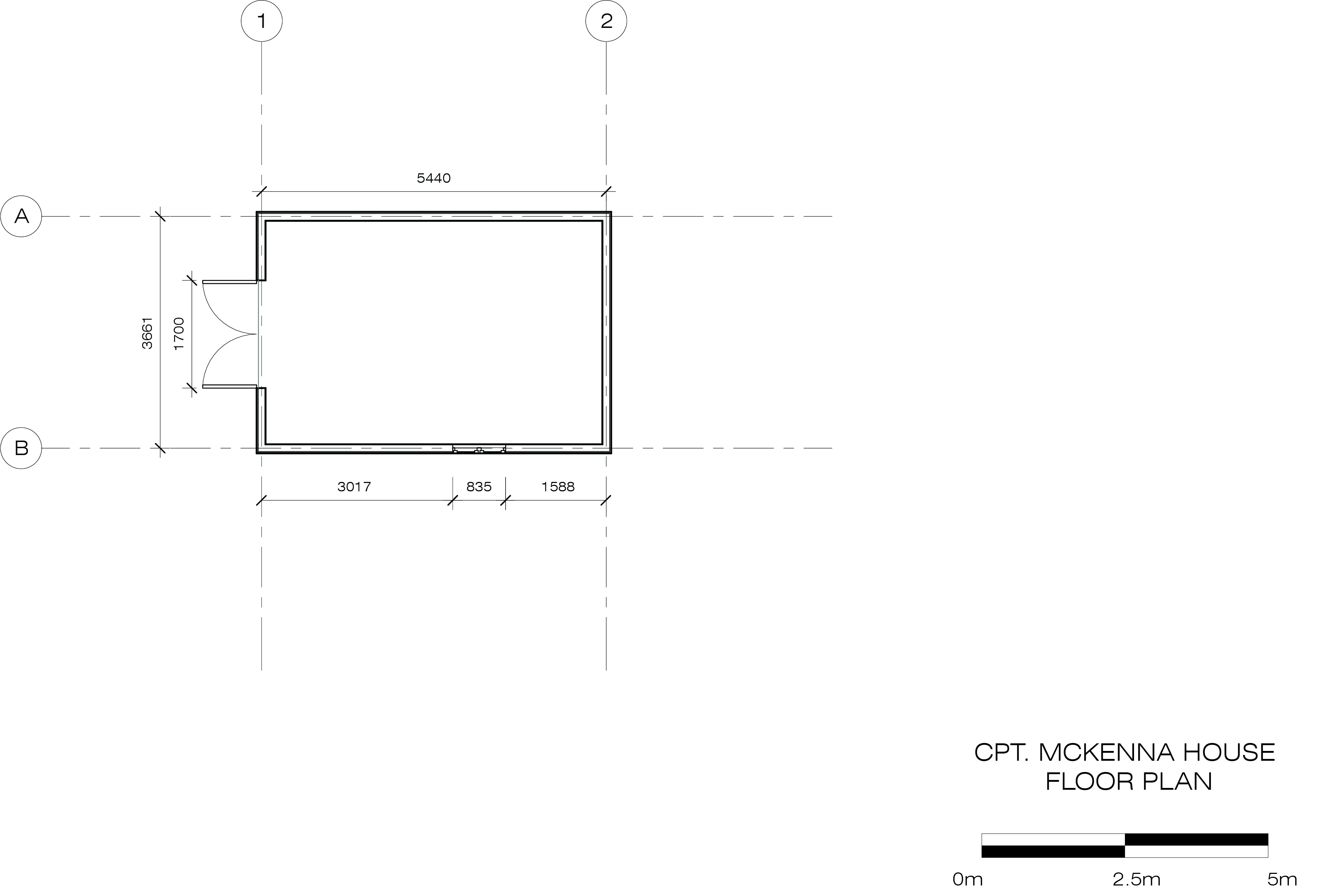
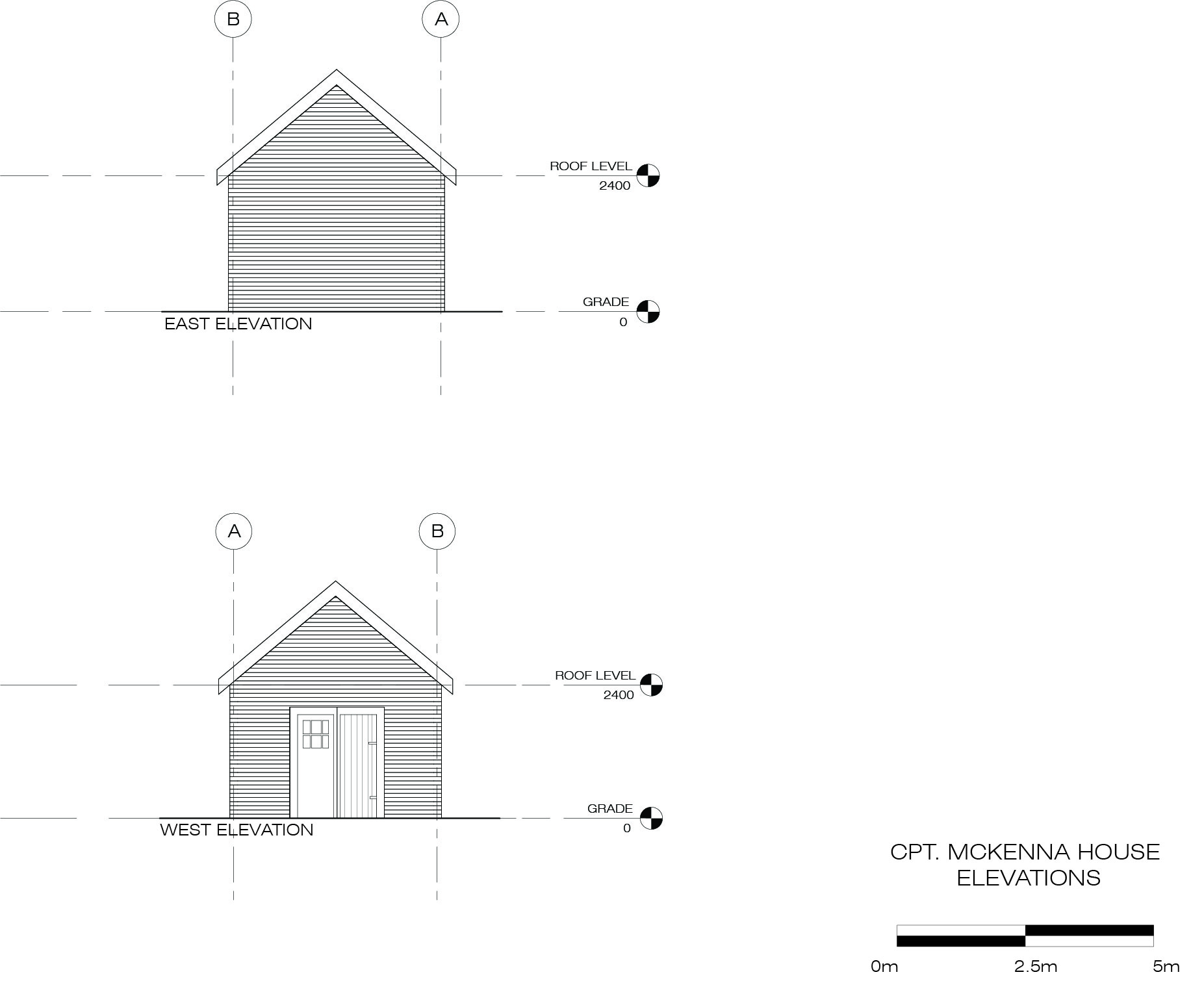
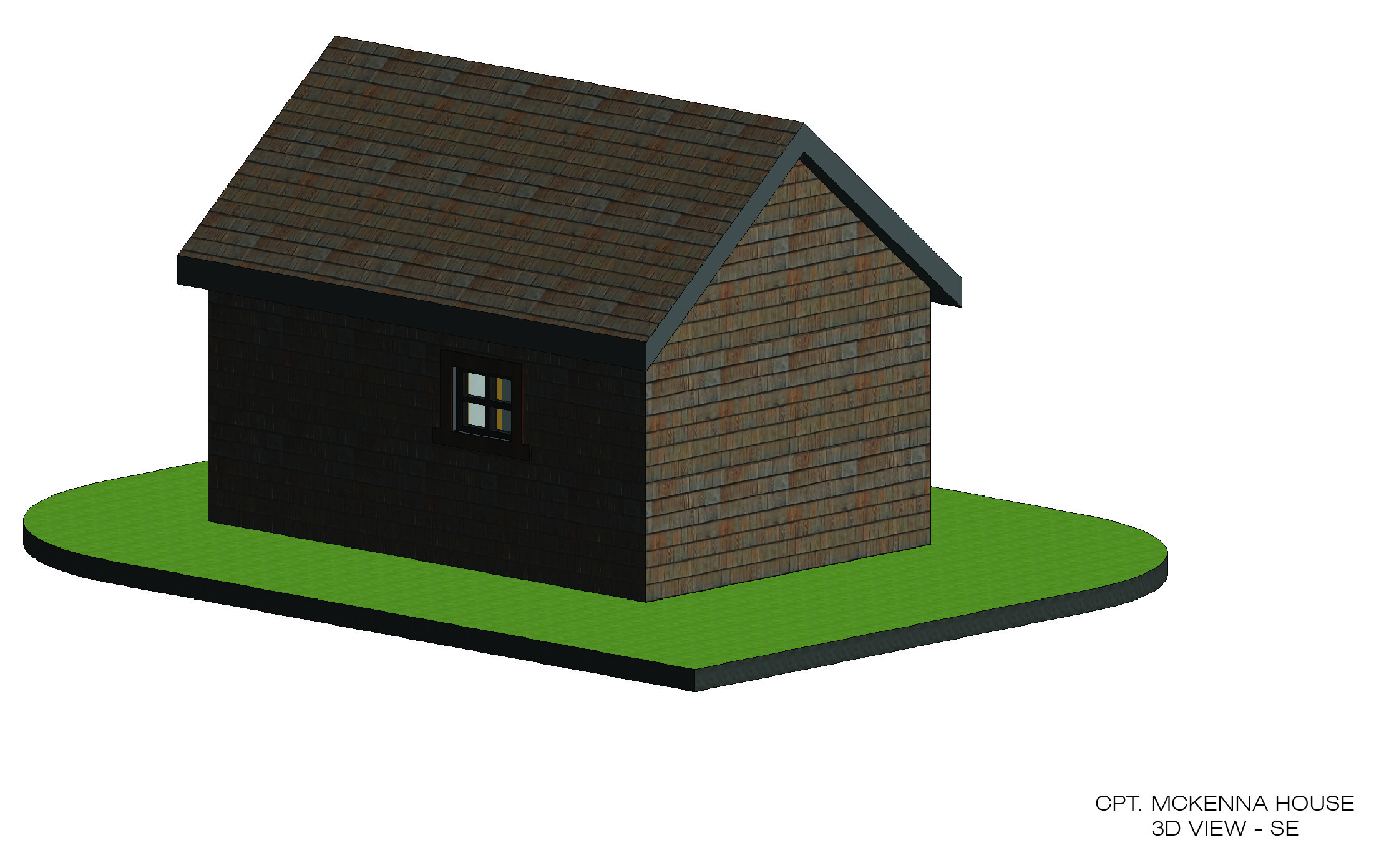
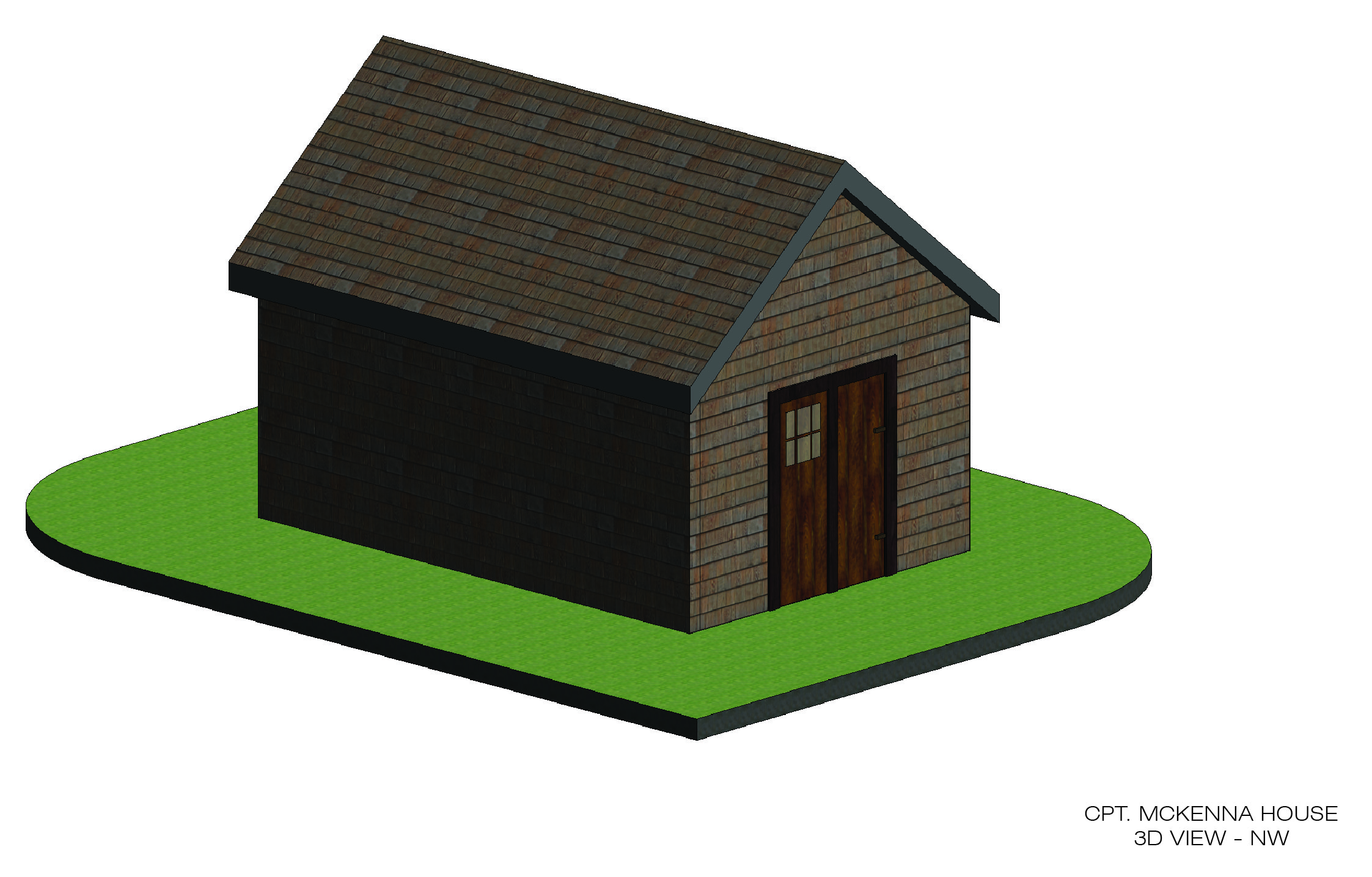
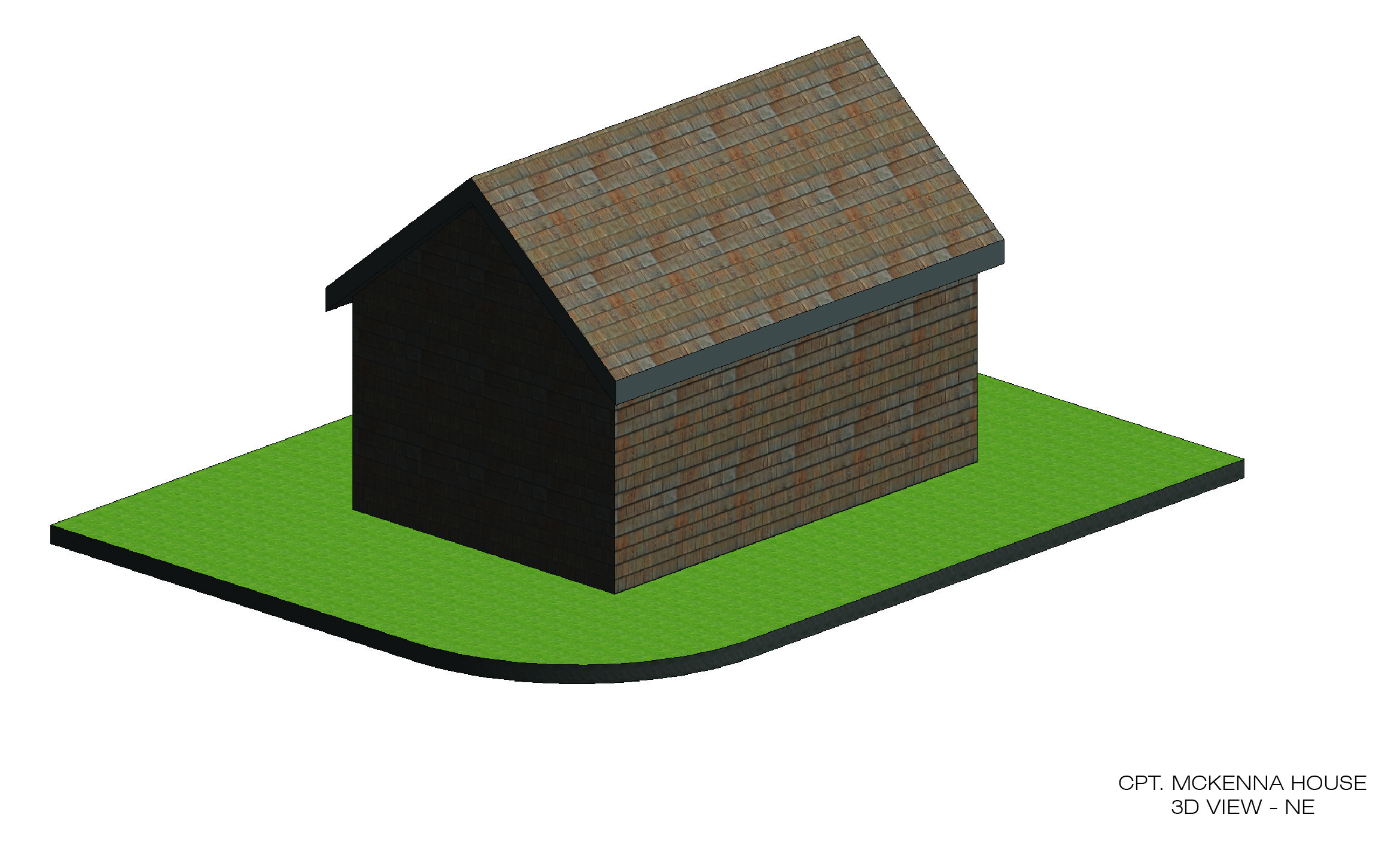
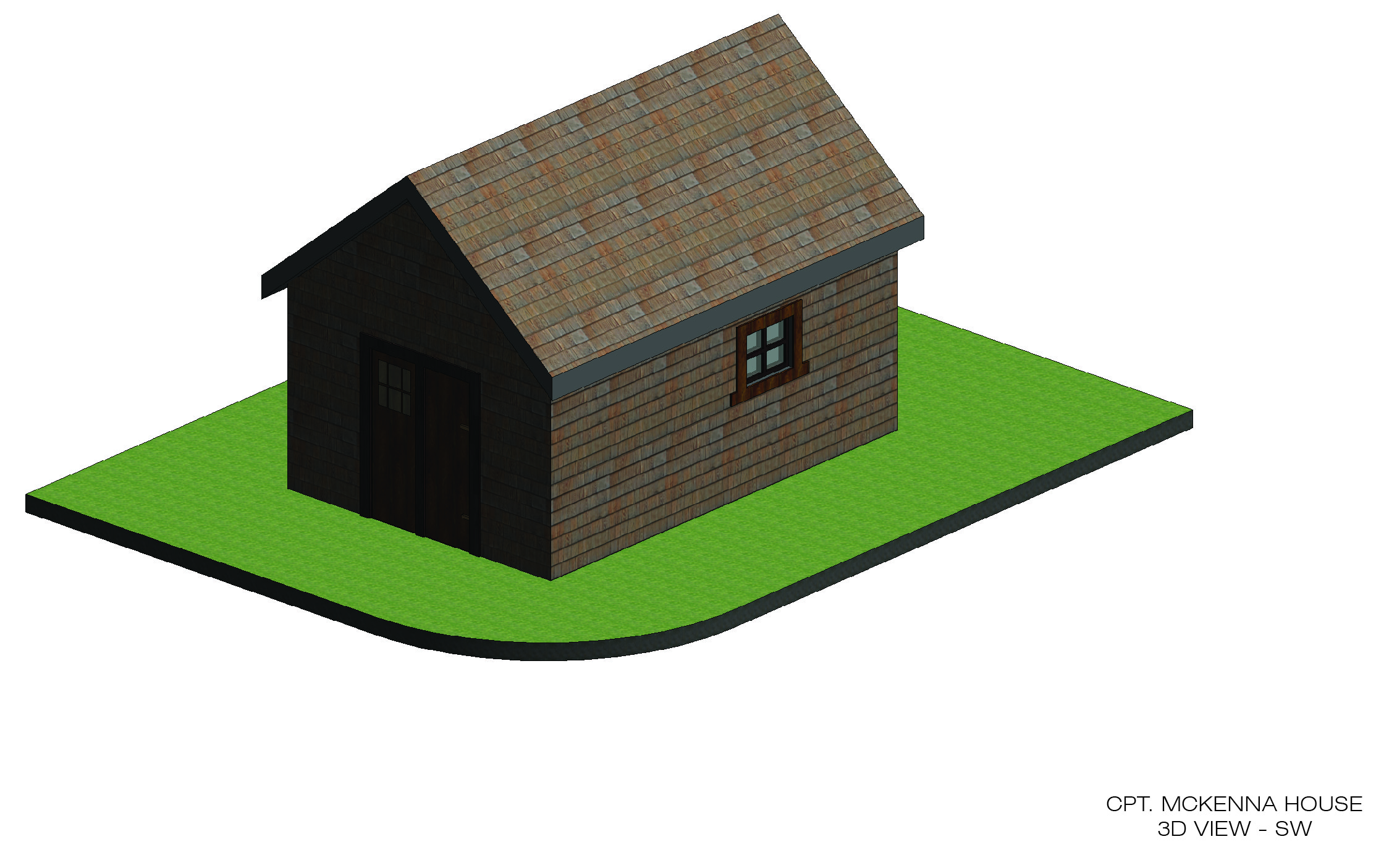
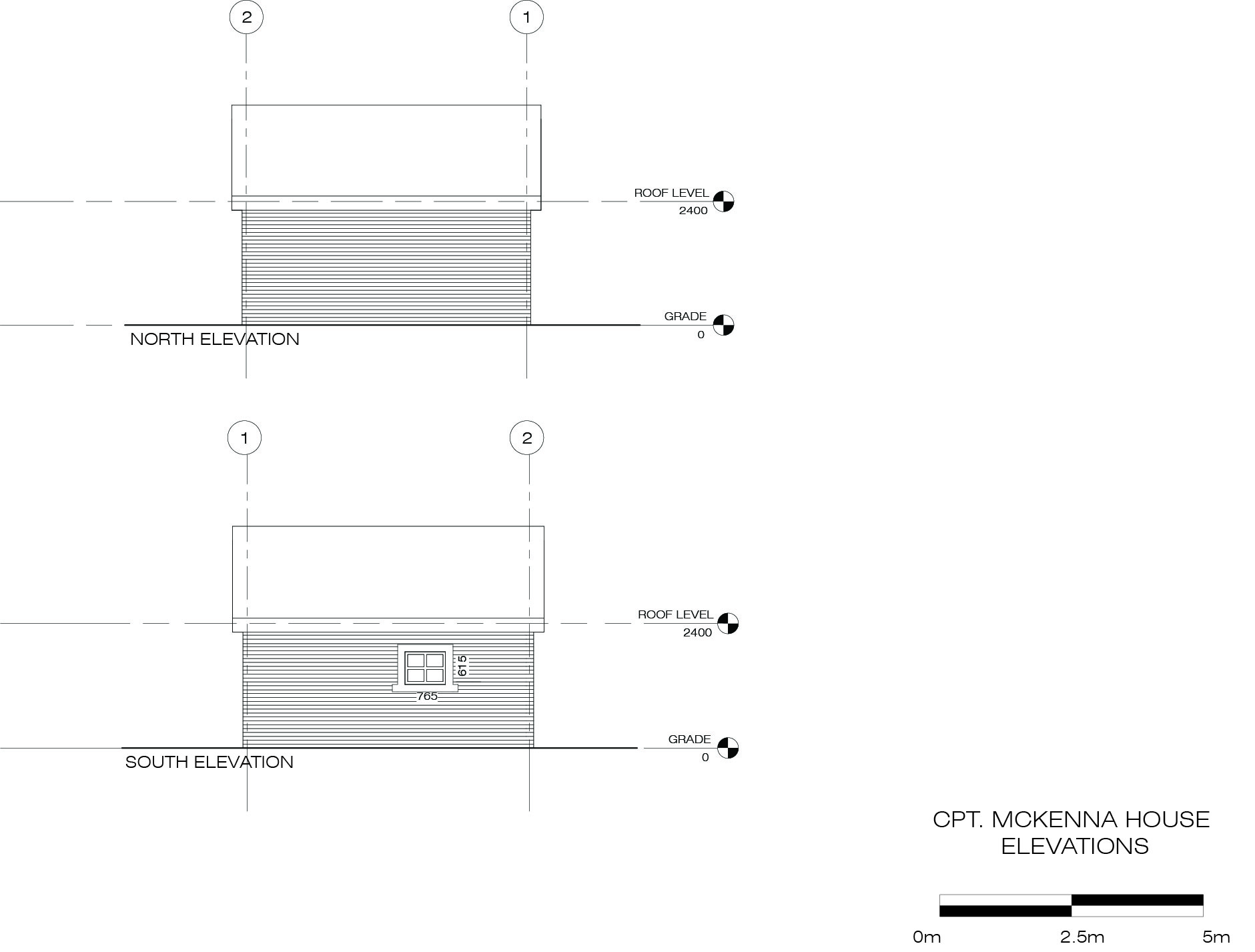
Digitally Capturing Captain James McKenna’s Cabin
The exterior of Ikagin House was captured first in July, 2018 with the Z+F 5010x scanner (red dots) using tripod mounted paddle targets. The paddle targets were strategically placed around the building and external area, such that no less than three were visible in each scanning location. The building was scanner with six scanning locations positions around the outside of the building in a circular shape. The exterior scan was registered using Z+F Laser Control software and then exported into AutoDesk ReCap Pro for further processing.
In July, 2019 the interior of the structure was captured using a Leica BLK 360 scanner (blue dots). No targets were used to capture the interior of the building, and scans were registered together using cloud-to-cloud registration in AutoDesk ReCap Mobile and Pro.
To combine the exterior and interior scans, one scanning position on the exterior was placed in front of the open doorway into the building to capture portions of the interior. The interior and exterior scans were then registered together in AutoDesk ReCap Pro using cloud-to-cloud registration based on the common data from that scanning position.
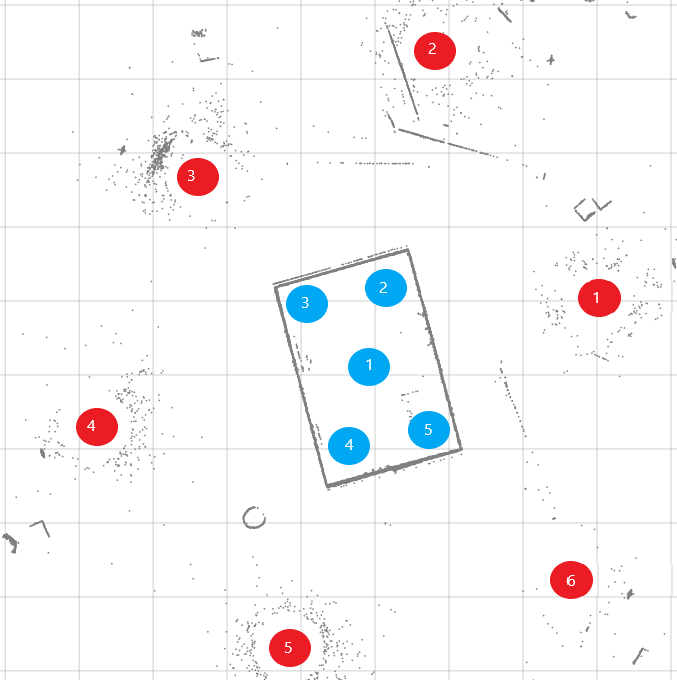
Scan Locations

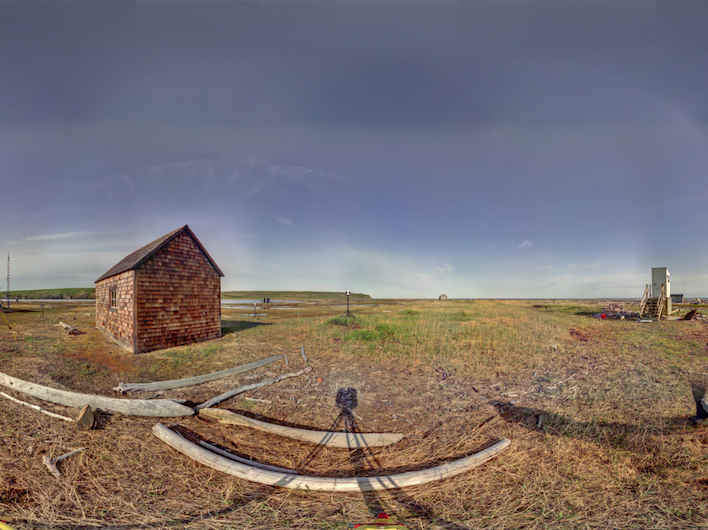

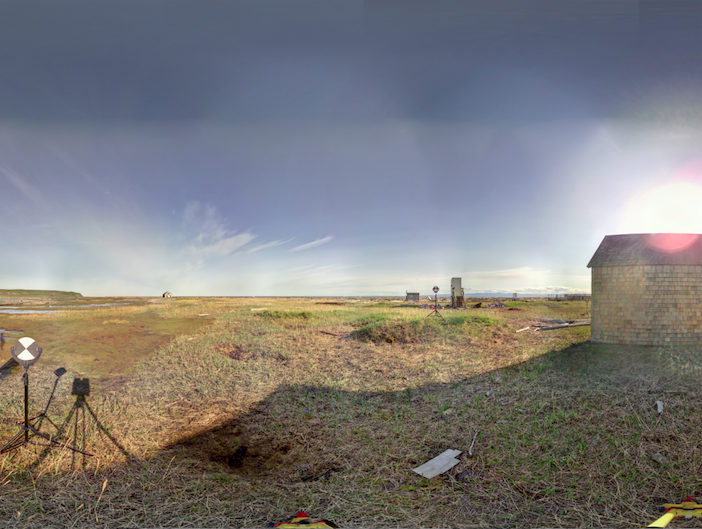
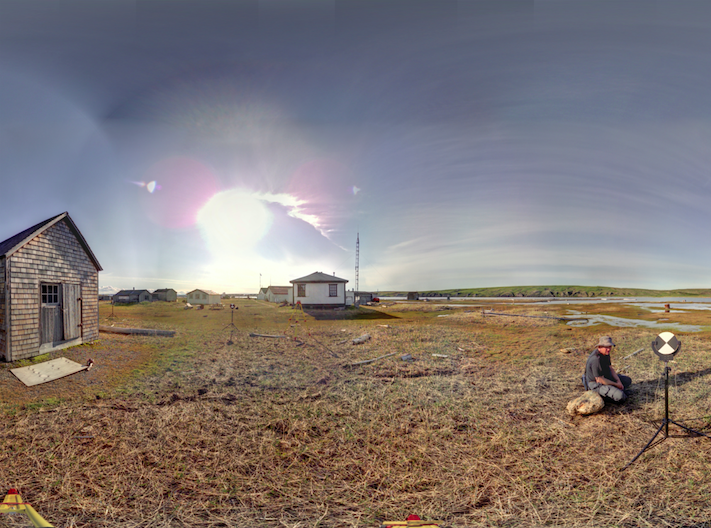
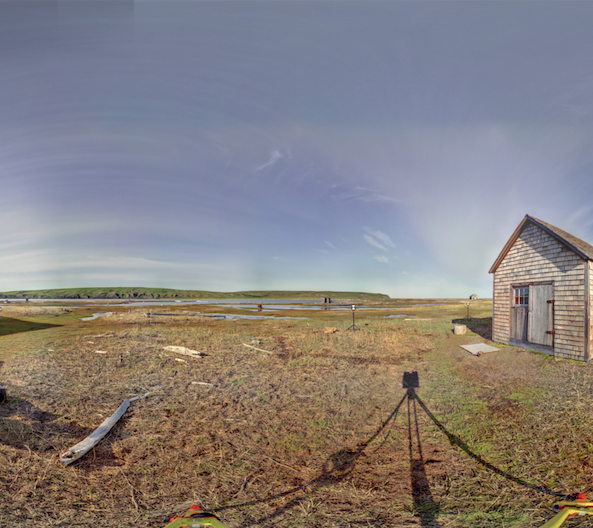
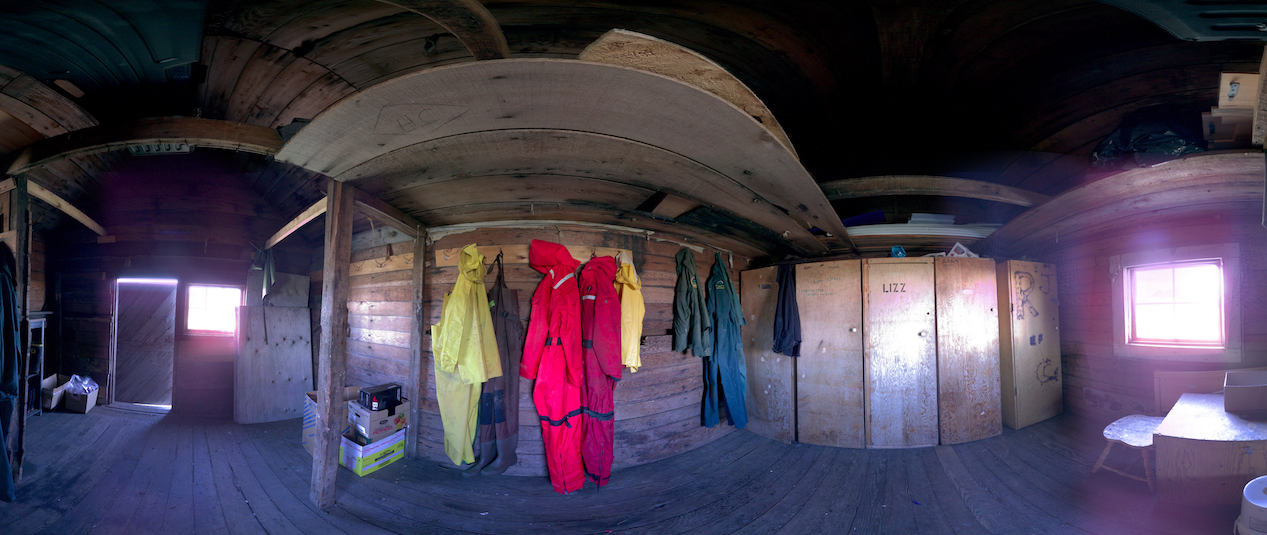
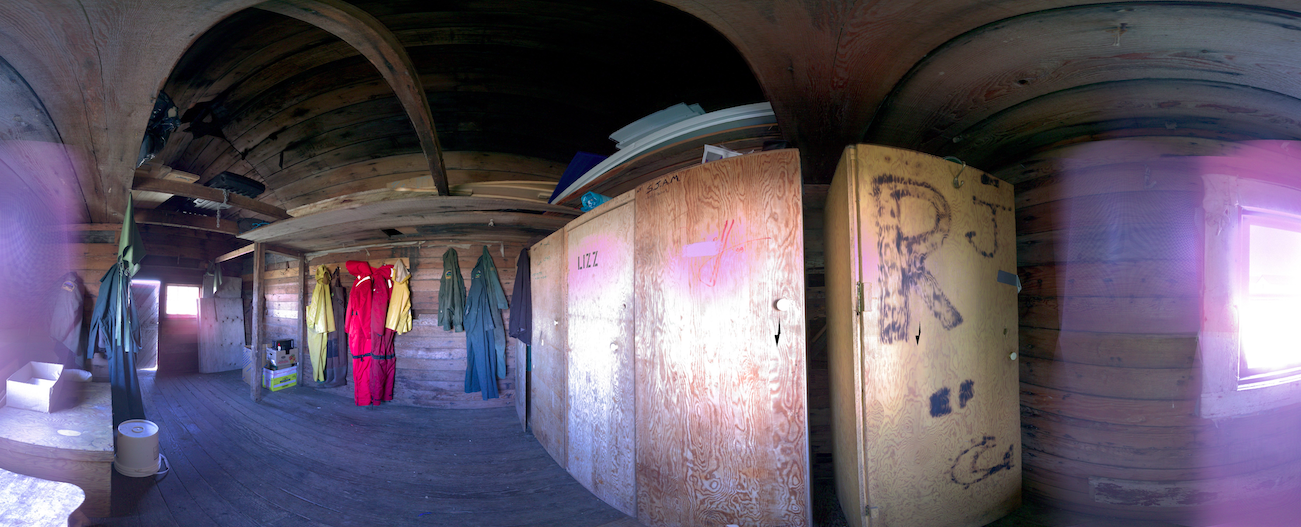

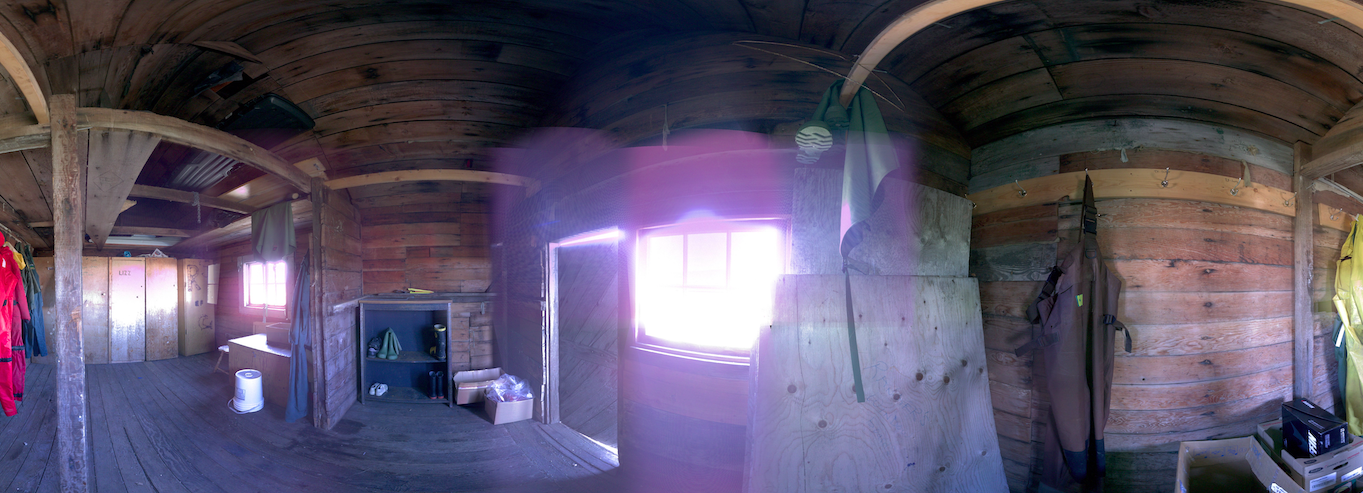

Grab the Slider With Your Mouse and Move it Left and Right to Compare Images.
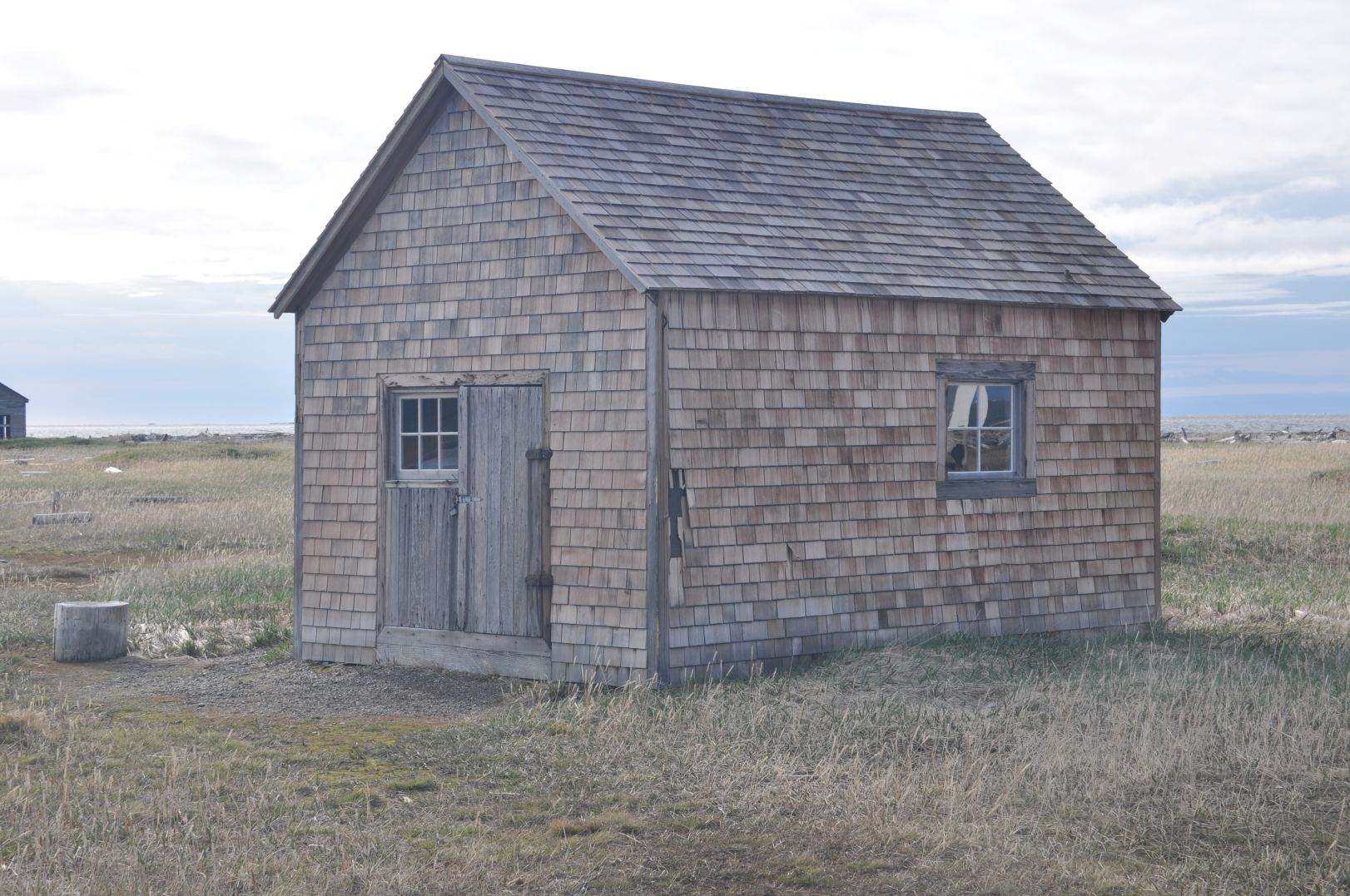

Historical Photograph
